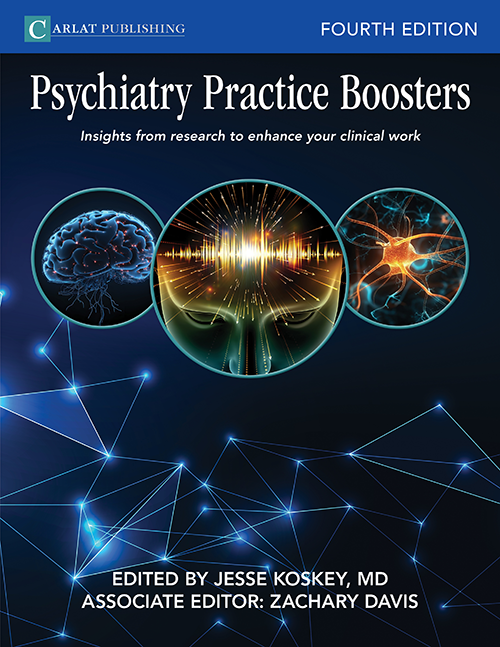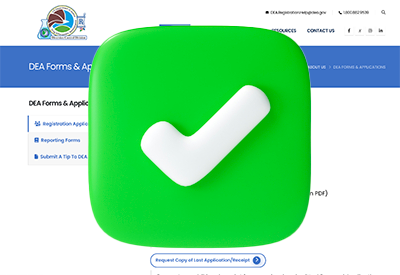Home » Evolution of the Autism Diagnosis
Evolution of the Autism Diagnosis
January 1, 2017
From The Carlat Child Psychiatry Report
 Fred Volkmar, MD
Professor of psychology at the Yale Child Study Center, New Haven, CT
Dr. Volkmar has disclosed that he is an editor for Springer Publishing. Dr. Elliott has reviewed this article and found no evidence of bias in this educational activity.
Fred Volkmar, MD
Professor of psychology at the Yale Child Study Center, New Haven, CT
Dr. Volkmar has disclosed that he is an editor for Springer Publishing. Dr. Elliott has reviewed this article and found no evidence of bias in this educational activity.
CCPR: Where did autism arise, and how do we understand its evolution over the last 50 years?
Dr. Volkmar: The history of autism goes back many years. There is a small literature suggesting that some of the reports of so-called “feral children” in Europe starting in the very late 1700s/early 1800s, eg, Victor, the Wild Boy of Aveyron by Itard, may well have been children with autism who would either have bolted from their home or been abandoned by their families.
CCPR: So the condition is not new.
Dr. Volkmar: No, but it was not until Leo Kanner and Hans Asperger published clear descriptions of the condition in the mid-1940s that people began systematically thinking about it as a special phenomenon apart from the more general concept of mental retardation on the one hand and childhood schizophrenia on the other. There is some controversy about who actually “discovered” autism, but Kanner was the first to publish a description of 11 cases in 1943 (Kanner L, Nervous Child 1943;(2):217–250. http://simonsfoundation.s3.amazonaws.com/share/071207-leo-kanner-autistic-affective-contact.pdf).
CCPR: And what was the essence of Kanner’s description of the disorder?
Dr. Volkmar: Kanner defined two features he thought characterized autism. One was the “autism,” or social withdrawal; the other was this funny category called “resistance to change.” Resistance to change literally can be just that, but it also includes “insistence on sameness”—sort of two sides of the same coin. Further, he described stereotypic behaviors that he saw as an attempt on the child’s part to maintain “sameness.” Basically, he conceived of these kids as being socially rather clueless but overly attuned to and intolerant of changes in their environment. And, of course, by its very nature, social interaction is change. Then, things remained fairly static until the 1970s, when researchers began publishing books and papers about the disorder. Michael Rutter’s work was especially influential.
CCPR: How did Rutter’s work differ from Kanner’s initial description?
Dr. Volkmar: Rutter basically systematized characteristics Kanner had described earlier, and his description strongly influenced the third edition of the Diagnostic and Statistical Manual (DSM-III), published in 1980, which was the first time psychiatry formally recognized autism as a disorder. In DSM-III, the criteria included a) onset before 30 months; b) a pervasive lack of responsiveness to others; c) severe delays in language development or, if language is present, d) peculiar speech patterns that could include immediate and delayed echolalia, metaphorical language, and pronominal reversal; e) atypical or bizarre responses to the environment; and f) no signs or symptoms suggestive of schizophrenia (see lead article for more details about the evolution of the autism diagnosis).
CCPR: DSM-III used a quite narrow definition of autism, consistent with Kanner’s belief that it was a rare disorder.
Dr. Volkmar: Yes, DSM-III called the disorder “infantile autism”; there also was a diagnosis of “residual infantile autism” for people who had once had the diagnosis but lost it. Also, DSM-III created a new diagnosis called child-onset pervasive developmental disorder (PDD), which, like infantile autism, entailed marked social impairment, plus a broad array of intense emotional reactions or odd interactions with the environment, with an age of onset after 30 months to 12 years.
CCPR: How did this change with the next edition of DSM?
Dr. Volkmar: With the publication of DSM-III-R in 1987, there was an effort both to be more specific with respect to criteria and also to create more flexibility to account for different presentations. PDD became an umbrella diagnosis, with autistic disorder under it. Autistic disorder retained the three categories of problems in a) socialization, b) communication, and c) odd behaviors and trouble with change. Again, as elaborated in the accompanying article, each category had specific examples of qualifying behaviors, and a person received the diagnosis based on having “enough” criteria. Also, the specific cutoff of 30 months was abandoned, replaced by occurring during infancy or childhood. In addition, DSM-III-R added PDD, not otherwise specified (PDD NOS), intended for individuals with some symptoms of autism but not enough to meet criteria for autistic disorder.
CCPR: Did you agree with the changes made in DSM-III-R?
Dr. Volkmar: Well, in hindsight, it probably would have been better to use “autism and related conditions” or even “autism spectrum disorder.” But, for many years, the emphasis was on autism as a specific, distinct disorder.
CCPR: What happened next?
Dr. Volkmar: In 1994, DSM-IV came out. I was very involved in that process, and we tried to correct several effects that DSM-III-R had had on how clinicians used these diagnoses. In my opinion, DSM-III-R was overly broad, especially among the more severely cognitively disabled: Many individuals previously diagnosed as having mental retardation were relabeled as having PDD. On the other hand, with its focus on young children, DSM-III-R’s definition did not lend itself to diagnosing older, more cognitively normal individuals. In DSM-IV, autistic disorder still included the same broad categories of social impairment, impaired language, and odd and restricted interests or behaviors, with some changes in specific criteria. The larger change was that PDD was broadened to include Asperger’s disorder, childhood disintegrative disorder, and Rett’s disorder, along with PDD NOS.
CCPR: Of those, it would seem that adding Asperger’s disorder had the most marked effect.
Dr. Volkmar: Yes, with its requirement for relatively normal language development and focus on impaired social interaction plus restricted interests and odd behaviors, it more readily applied to older children, adolescents, and adults.
CCPR: What changed in 2013, when DSM-5 was released?
Dr. Volkmar: DSM-5 was a very different kettle of fish. It had some good things and some bad things, at least from my point of view. One of the good things about DSM-5 is the change of the name from autistic disorder to autism spectrum disorder (ASD), acknowledging the growing recognition, based partly on genetics, that autism is not the single disorder we once thought it to be.
CCPR: How else did DSM-5 change our perspective of autism?
Dr. Volkmar: Well, we used to say, “Oh, autism is very clear. It’s the one true disorder in child psychiatry.” Now we realize that there’s a spectrum, which makes some sense, especially from a broad evolutionary perspective: If these changes were totally maladaptive, they presumably would have been lost over time; instead, they’ve persisted. That suggests that, for some people, some other combinations of these genes must be somewhat or even quite adaptive.
CCPR: Any drawbacks to the way DSM-5 defines ASD?
Dr. Volkmar: Paradoxically, even though it has the word “spectrum” in the label, ASD is quite narrowly defined. In DSM-IV, there were well over 2,000 combinations of criteria that could lead to a diagnosis of autistic disorder vs roughly 12 with DSM-5. In a way, it’s a return to Kanner’s conception of autism, and the new criteria bring it much closer to the DSM-III definition of infantile autism.
CCPR: Practically speaking, how does this change in criteria matter?
Dr. Volkmar: It means that a lot of DSM-IV autistic people who are at the higher range of cognitive ability no longer qualify for the diagnosis. Since 2013, several mini-studies and at least one meta-analysis of all the studies have shown that among those with higher levels of cognitive ability, roughly 80% do not keep a diagnosis of ASD (Smith IC, J Autism Develop Dis 2015;45(8):2541–2552). And, interestingly enough, the other problem area turns out to be very young children, many of whom no longer qualify for an ASD diagnosis. In both cases, especially in the U.S., this is a problem because if you don’t qualify for a label, you don’t get services.
CCPR: What’s the solution, as you see it?
Dr. Volkmar: One temporary solution—though a less-than-ideal one—was incorporated into DSM-5. This was to grandfather people who have a well-established preexisting diagnosis into ASD. Of course, that does not address the issue of those first being diagnosed using DSM-5 criteria alone. I hope this narrowing of criteria will be rectified in the next iteration of DSM-5, especially with respect to very young children, where we believe intervention is the most likely to have the greatest benefit.
CCPR: Any other concerns with DSM-5?
Dr. Volkmar: Well, there is the loss of the diagnosis of Asperger’s disorder. One certainly can debate the fine points of Asperger’s or not Asperger’s, but I think the diagnosis met a clear need that the ASD diagnosis does not address.
CCPR: Given your concerns about people being inappropriately excluded from an ASD diagnosis with DSM-5, how do you explain the perception that ASD has been rapidly increasing in prevalence over the past decade or so? Is the reported increased prevalence real? Is it just a definitional issue?
Dr. Volkmar: I think there are two aspects to this. One is, if you go back to think about yourself in grade school, did you know strange kids? Almost certainly. Did you know kids with the diagnosis of autism? Probably not. If you go back and look at the earliest editions of the Handbook of Autism in epidemiological terms and walk it out to what we now would define as a broader spectrum, it is on the order of 1 in 150–200 kids with autism.
CCPR: So much of the apparent increase is a matter of how we are defining our terms?
Dr. Volkmar: I think we’ve got this funny disconnect where both the lay public and professionals think about ASD in broad terms, resulting in high prevalence estimates, while “classical autism” remains relatively rare—though probably not as rare as originally believed. Another point is that the ASD label now, unfortunately, has a certain pizzazz. Parents know about it and would rather their child have ASD than, for example, intellectual disability. ASD is a more “hopeful” label, and you get more services around it.
CCPR: What about the actual data that the Centers for Disease Control and Prevention are reporting?
Dr. Volkmar: Many of the research studies that are done—even at the very high levels of the federal government—rely on secondary data, such as school-based records. One I recently reviewed derived its data from calling up parents and asking, “Has anyone ever mentioned autism to you in terms of talking about your child?”
CCPR: Not very rigorous.
Dr. Volkmar: Exactly. I think the reality is that we truly don’t know. My guess is—and I think most people who know a lot about this would probably agree—that the actual prevalence has not changed much, if at all, since the mid-1940s. But, as I said, we don’t really know, and part of the problem is trying to disentangle the more classical Kannerian autism from the broader spectrum.
CCPR: Any other factors that might be influencing our perception of prevalence?
Dr. Volkmar: Yes. With early intervention and detection, kids are doing better over time, which is great news. We’ve got more and more kids with ASD going to college. As far as I’m aware, there are five undergraduates at Yale right now with autism, self-identified. That used to never happen.
CCPR: So, you’re saying that, either because we have broadened the definition considerably or because of earlier detection and intervention, we may be seeing kids who truly would qualify for the old DSM-III residual state autism?
Dr. Volkmar: Certainly it may be worth looking at that possibility again.
CCPR: Thank you, Dr. Volkmar, for sharing your extensive experience on this important topic.
Child PsychiatryDr. Volkmar: The history of autism goes back many years. There is a small literature suggesting that some of the reports of so-called “feral children” in Europe starting in the very late 1700s/early 1800s, eg, Victor, the Wild Boy of Aveyron by Itard, may well have been children with autism who would either have bolted from their home or been abandoned by their families.
CCPR: So the condition is not new.
Dr. Volkmar: No, but it was not until Leo Kanner and Hans Asperger published clear descriptions of the condition in the mid-1940s that people began systematically thinking about it as a special phenomenon apart from the more general concept of mental retardation on the one hand and childhood schizophrenia on the other. There is some controversy about who actually “discovered” autism, but Kanner was the first to publish a description of 11 cases in 1943 (Kanner L, Nervous Child 1943;(2):217–250. http://simonsfoundation.s3.amazonaws.com/share/071207-leo-kanner-autistic-affective-contact.pdf).
CCPR: And what was the essence of Kanner’s description of the disorder?
Dr. Volkmar: Kanner defined two features he thought characterized autism. One was the “autism,” or social withdrawal; the other was this funny category called “resistance to change.” Resistance to change literally can be just that, but it also includes “insistence on sameness”—sort of two sides of the same coin. Further, he described stereotypic behaviors that he saw as an attempt on the child’s part to maintain “sameness.” Basically, he conceived of these kids as being socially rather clueless but overly attuned to and intolerant of changes in their environment. And, of course, by its very nature, social interaction is change. Then, things remained fairly static until the 1970s, when researchers began publishing books and papers about the disorder. Michael Rutter’s work was especially influential.
CCPR: How did Rutter’s work differ from Kanner’s initial description?
Dr. Volkmar: Rutter basically systematized characteristics Kanner had described earlier, and his description strongly influenced the third edition of the Diagnostic and Statistical Manual (DSM-III), published in 1980, which was the first time psychiatry formally recognized autism as a disorder. In DSM-III, the criteria included a) onset before 30 months; b) a pervasive lack of responsiveness to others; c) severe delays in language development or, if language is present, d) peculiar speech patterns that could include immediate and delayed echolalia, metaphorical language, and pronominal reversal; e) atypical or bizarre responses to the environment; and f) no signs or symptoms suggestive of schizophrenia (see lead article for more details about the evolution of the autism diagnosis).
CCPR: DSM-III used a quite narrow definition of autism, consistent with Kanner’s belief that it was a rare disorder.
Dr. Volkmar: Yes, DSM-III called the disorder “infantile autism”; there also was a diagnosis of “residual infantile autism” for people who had once had the diagnosis but lost it. Also, DSM-III created a new diagnosis called child-onset pervasive developmental disorder (PDD), which, like infantile autism, entailed marked social impairment, plus a broad array of intense emotional reactions or odd interactions with the environment, with an age of onset after 30 months to 12 years.
CCPR: How did this change with the next edition of DSM?
Dr. Volkmar: With the publication of DSM-III-R in 1987, there was an effort both to be more specific with respect to criteria and also to create more flexibility to account for different presentations. PDD became an umbrella diagnosis, with autistic disorder under it. Autistic disorder retained the three categories of problems in a) socialization, b) communication, and c) odd behaviors and trouble with change. Again, as elaborated in the accompanying article, each category had specific examples of qualifying behaviors, and a person received the diagnosis based on having “enough” criteria. Also, the specific cutoff of 30 months was abandoned, replaced by occurring during infancy or childhood. In addition, DSM-III-R added PDD, not otherwise specified (PDD NOS), intended for individuals with some symptoms of autism but not enough to meet criteria for autistic disorder.
CCPR: Did you agree with the changes made in DSM-III-R?
Dr. Volkmar: Well, in hindsight, it probably would have been better to use “autism and related conditions” or even “autism spectrum disorder.” But, for many years, the emphasis was on autism as a specific, distinct disorder.
CCPR: What happened next?
Dr. Volkmar: In 1994, DSM-IV came out. I was very involved in that process, and we tried to correct several effects that DSM-III-R had had on how clinicians used these diagnoses. In my opinion, DSM-III-R was overly broad, especially among the more severely cognitively disabled: Many individuals previously diagnosed as having mental retardation were relabeled as having PDD. On the other hand, with its focus on young children, DSM-III-R’s definition did not lend itself to diagnosing older, more cognitively normal individuals. In DSM-IV, autistic disorder still included the same broad categories of social impairment, impaired language, and odd and restricted interests or behaviors, with some changes in specific criteria. The larger change was that PDD was broadened to include Asperger’s disorder, childhood disintegrative disorder, and Rett’s disorder, along with PDD NOS.
CCPR: Of those, it would seem that adding Asperger’s disorder had the most marked effect.
Dr. Volkmar: Yes, with its requirement for relatively normal language development and focus on impaired social interaction plus restricted interests and odd behaviors, it more readily applied to older children, adolescents, and adults.
CCPR: What changed in 2013, when DSM-5 was released?
Dr. Volkmar: DSM-5 was a very different kettle of fish. It had some good things and some bad things, at least from my point of view. One of the good things about DSM-5 is the change of the name from autistic disorder to autism spectrum disorder (ASD), acknowledging the growing recognition, based partly on genetics, that autism is not the single disorder we once thought it to be.
CCPR: How else did DSM-5 change our perspective of autism?
Dr. Volkmar: Well, we used to say, “Oh, autism is very clear. It’s the one true disorder in child psychiatry.” Now we realize that there’s a spectrum, which makes some sense, especially from a broad evolutionary perspective: If these changes were totally maladaptive, they presumably would have been lost over time; instead, they’ve persisted. That suggests that, for some people, some other combinations of these genes must be somewhat or even quite adaptive.
CCPR: Any drawbacks to the way DSM-5 defines ASD?
Dr. Volkmar: Paradoxically, even though it has the word “spectrum” in the label, ASD is quite narrowly defined. In DSM-IV, there were well over 2,000 combinations of criteria that could lead to a diagnosis of autistic disorder vs roughly 12 with DSM-5. In a way, it’s a return to Kanner’s conception of autism, and the new criteria bring it much closer to the DSM-III definition of infantile autism.
CCPR: Practically speaking, how does this change in criteria matter?
Dr. Volkmar: It means that a lot of DSM-IV autistic people who are at the higher range of cognitive ability no longer qualify for the diagnosis. Since 2013, several mini-studies and at least one meta-analysis of all the studies have shown that among those with higher levels of cognitive ability, roughly 80% do not keep a diagnosis of ASD (Smith IC, J Autism Develop Dis 2015;45(8):2541–2552). And, interestingly enough, the other problem area turns out to be very young children, many of whom no longer qualify for an ASD diagnosis. In both cases, especially in the U.S., this is a problem because if you don’t qualify for a label, you don’t get services.
CCPR: What’s the solution, as you see it?
Dr. Volkmar: One temporary solution—though a less-than-ideal one—was incorporated into DSM-5. This was to grandfather people who have a well-established preexisting diagnosis into ASD. Of course, that does not address the issue of those first being diagnosed using DSM-5 criteria alone. I hope this narrowing of criteria will be rectified in the next iteration of DSM-5, especially with respect to very young children, where we believe intervention is the most likely to have the greatest benefit.
CCPR: Any other concerns with DSM-5?
Dr. Volkmar: Well, there is the loss of the diagnosis of Asperger’s disorder. One certainly can debate the fine points of Asperger’s or not Asperger’s, but I think the diagnosis met a clear need that the ASD diagnosis does not address.
CCPR: Given your concerns about people being inappropriately excluded from an ASD diagnosis with DSM-5, how do you explain the perception that ASD has been rapidly increasing in prevalence over the past decade or so? Is the reported increased prevalence real? Is it just a definitional issue?
Dr. Volkmar: I think there are two aspects to this. One is, if you go back to think about yourself in grade school, did you know strange kids? Almost certainly. Did you know kids with the diagnosis of autism? Probably not. If you go back and look at the earliest editions of the Handbook of Autism in epidemiological terms and walk it out to what we now would define as a broader spectrum, it is on the order of 1 in 150–200 kids with autism.
CCPR: So much of the apparent increase is a matter of how we are defining our terms?
Dr. Volkmar: I think we’ve got this funny disconnect where both the lay public and professionals think about ASD in broad terms, resulting in high prevalence estimates, while “classical autism” remains relatively rare—though probably not as rare as originally believed. Another point is that the ASD label now, unfortunately, has a certain pizzazz. Parents know about it and would rather their child have ASD than, for example, intellectual disability. ASD is a more “hopeful” label, and you get more services around it.
CCPR: What about the actual data that the Centers for Disease Control and Prevention are reporting?
Dr. Volkmar: Many of the research studies that are done—even at the very high levels of the federal government—rely on secondary data, such as school-based records. One I recently reviewed derived its data from calling up parents and asking, “Has anyone ever mentioned autism to you in terms of talking about your child?”
CCPR: Not very rigorous.
Dr. Volkmar: Exactly. I think the reality is that we truly don’t know. My guess is—and I think most people who know a lot about this would probably agree—that the actual prevalence has not changed much, if at all, since the mid-1940s. But, as I said, we don’t really know, and part of the problem is trying to disentangle the more classical Kannerian autism from the broader spectrum.
CCPR: Any other factors that might be influencing our perception of prevalence?
Dr. Volkmar: Yes. With early intervention and detection, kids are doing better over time, which is great news. We’ve got more and more kids with ASD going to college. As far as I’m aware, there are five undergraduates at Yale right now with autism, self-identified. That used to never happen.
CCPR: So, you’re saying that, either because we have broadened the definition considerably or because of earlier detection and intervention, we may be seeing kids who truly would qualify for the old DSM-III residual state autism?
Dr. Volkmar: Certainly it may be worth looking at that possibility again.
CCPR: Thank you, Dr. Volkmar, for sharing your extensive experience on this important topic.

Issue Date: January 1, 2017
Table Of Contents
Recommended
Newsletters
Please see our Terms and Conditions, Privacy Policy, Subscription Agreement, Use of Cookies, and Hardware/Software Requirements to view our website.
© 2025 Carlat Publishing, LLC and Affiliates, All Rights Reserved.


_-The-Breakthrough-Antipsychotic-That-Could-Change-Everything.jpg?1729528747)



